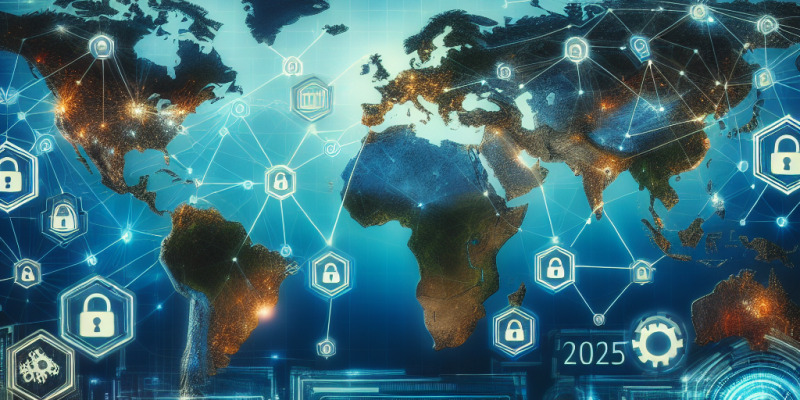Cybersecurity in a Post-Pandemic World: Trends and Innovations of 2025

As we move deeper into 2025, the landscape of cybersecurity continues to evolve, driven significantly by lessons learned during the COVID-19 pandemic. The shift to remote work and increased online activity during the pandemic highlighted vulnerabilities in our digital systems. Now, businesses and individuals alike are looking for innovative ways to protect their data and privacy. Here are some key trends and innovations shaping cybersecurity today.
1. Rise of Zero-Trust Architecture
The concept of zero-trust architecture has become a cornerstone of IT security strategies. Unlike traditional security models that trust users inside the network, zero-trust assumes no one is trustworthy by default. Organizations are increasingly implementing multi-factor authentication (MFA) and continuous monitoring to ensure all users are verified before accessing sensitive information.
2. Artificial Intelligence and Machine Learning
AI and machine learning are revolutionizing cybersecurity. In 2025, these technologies are being used to identify threats in real time. Automated systems can quickly analyze vast amounts of data to detect unusual patterns that might indicate a breach. This allows for faster response times and reduces the burden on IT teams.
3. Increased Focus on Ransomware Protection
Ransomware attacks have surged in recent years, prompting organizations to take more proactive measures. In 2025, businesses are investing heavily in ransomware protection solutions, which include specialized software and employee training programs. Organizations are also conducting regular backups and ensuring that critical data is stored in secure locations to mitigate the impacts of potential attacks.
4. The Importance of Cyber Hygiene
As remote work becomes a permanent fixture for many, maintaining good cyber hygiene is essential. Companies are emphasizing the need for employees to follow best practices, such as using strong passwords, recognizing phishing attempts, and keeping software updated. In 2025, training programs are more interactive and tailored, making it easier for employees to understand the importance of cybersecurity.
5. Privacy Regulations and Compliance
With growing concerns about data privacy, governments worldwide are implementing stricter regulations. The General Data Protection Regulation (GDPR) has set a precedent, and new laws regarding data protection and user privacy are emerging. In 2025, organizations are actively working to comply with these regulations, as non-compliance can result in hefty fines and damage to reputation.
6. Cloud Security Innovations
As more businesses move to the cloud, securing these environments is a top priority. Innovations in cloud security, such as advanced encryption techniques and secure access service edge (SASE), are becoming standard. In 2025, organizations are not just relying on the cloud providers for security; they are also implementing their own solutions to ensure a layered approach to cloud security.
7. Internet of Things (IoT) Security
The rise of the Internet of Things (IoT) has introduced new security challenges. Many devices lack robust security measures, making them easy targets for cybercriminals. In 2025, there is a heightened focus on securing IoT devices. Manufacturers are being urged to integrate stronger security features, and users are encouraged to monitor and manage connected devices effectively.
Conclusion
In the post-pandemic world of 2025, cybersecurity has become a crucial focus for businesses and individuals alike. The lessons learned from the pandemic have driven innovations and trends that aim to create a safer digital landscape. Adopting zero-trust architecture, leveraging AI, focusing on ransomware protection, and adhering to privacy regulations are just a few steps that organizations are taking to enhance their cybersecurity posture. As threats continue to evolve, staying informed and adopting best practices will be imperative to navigating the complexities of cybersecurity in the years to come.














